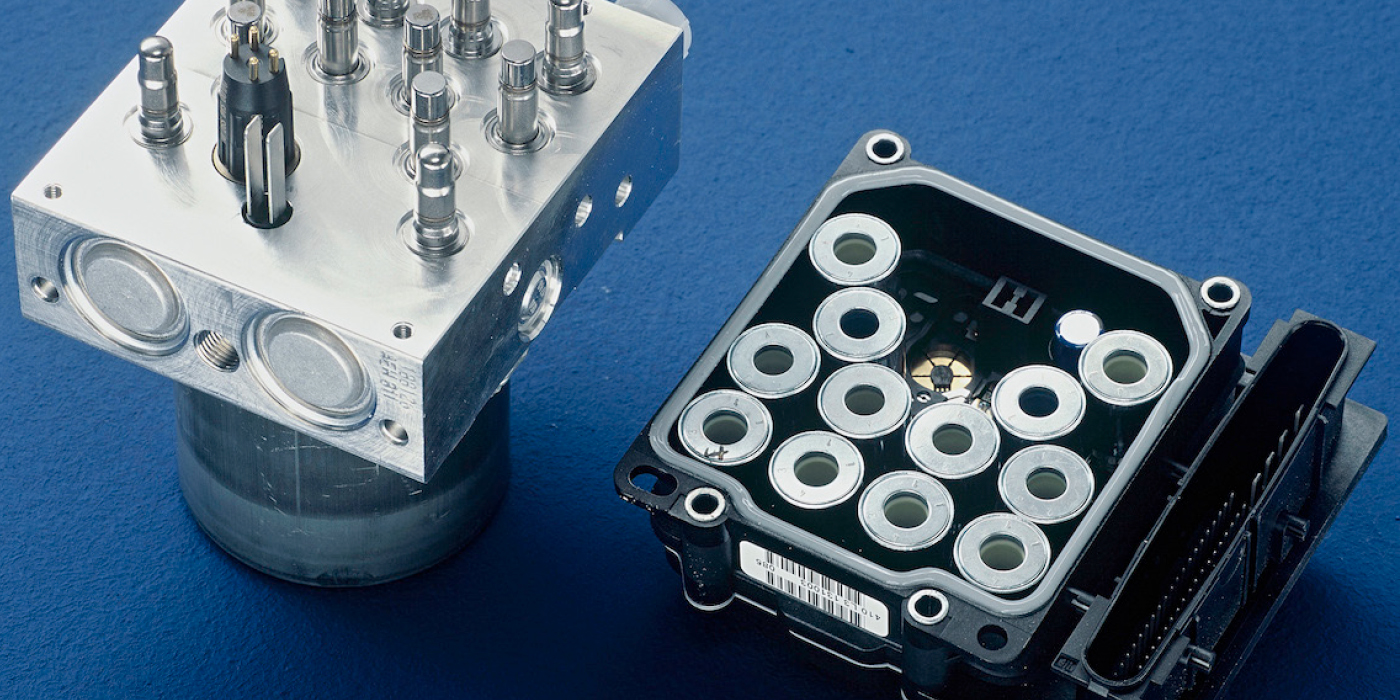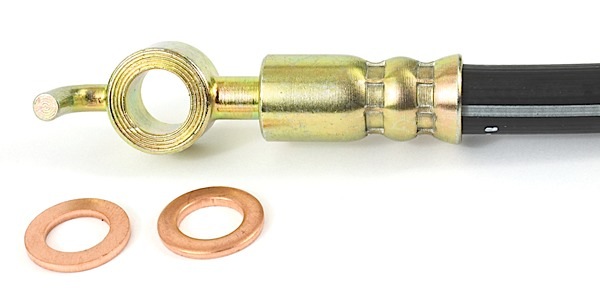Hydraulic Control Units
The ABS module and HCU are the heart of any ABS or stability control system.

Undercar CAN Bus Diagnostics
A serial data bus uses voltage to communicate. Modules toggle the signal off and on.

What DOT Really Means: Brake Hose Inspection And Replacement
Brake hoses are the most government-regulated components on a vehicle. Anyone making brake assemblies must be registered with the Department of Transportation (DOT). All aftermarket hose, fittings and complete hoses must conform to FMVSS 106 and SAE J1401. These tests are demanding and often exceed what a vehicle will see in the real world.

Performing A Brake Job On A 2007-2013 Toyota Tundra
For 2007, the Toyota Tundra was redesigned. The body changed, and the foundation brake system was also updated with larger front brake calipers and rear disc brakes. The control system and hydraulics changed with a new vehicle stability system that included yaw, steering angle and brake pedal load sensors.
Toyota Tech Tip: Front Brake Rattle Noise
Some Corolla and Matrix owners may experience a front brake rattle type of noise when the car is traveling over bumps. Updated front disc brake cylinder (caliper) mountings and disc brake pad support plates are available to eliminate this condition. Conduct a road test to verify the noise condition. Front brake rattle noise will occur when the front tire runs over a depression in the road.
Tech Tip: Ford/Lincoln Rear Brake Drag Or Rear Brake Noise
Some 2009-2010 Flex, MKS and 2010 Taurus and MKT may exhibit rear brake drag and/or off-brake cyclic noise. The noise may be caused by pad to piston misalignment or corrosion on the brake caliper bracket. Follow the Service Procedure steps to correct the condition.
Tech Tip: Nissan Front Brake Caliper Fluid Residue
If you confirm there is oil residue on the brake caliper and it’s not assembly lubricant, refer to the Service Procedure as part of your normal brake diagnostic procedure. Note: Castor oil assembly lubricant is applied to the brake caliper when it’s built and some residue is normal. Do not replace the caliper for castor oil residue.
Tech Tip: Caliper Replacement Check List
Check vehicle service information for any special procedures for piston retraction, electronic brake assist system deactivation or proportioning/metering valve reset.
Diagnosing And Repairing Worn Brake Hydraulics
During a service writer’s efforts to sell competitive brake services at the service desk, he or she often focuses on selling “good, better or best” brake friction replacements, while ignoring the added expense of repairing brake hydraulics. Unfortunately, neglected brake hydraulic systems can cause an expensive warranty comeback or, even worse, a serious traffic accident. In any case, it’s important to advise a potential customer of the importance of servicing and repairing worn brake hydraulics.
Tech Tip: Hydro-Boost Tips And Hints
Hydro-boost brake systems are self-bleeding if there is no other problem in the system. Use this initial bleeding procedure whenever replacing or servicing any component in a hydro-boost system. Normal driving conditions will remove air that remains trapped within the system when components are properly installed and there are no flow restrictions in the system. Always refer to the vehicle service manual for specific installation and testing procedures on import and domestic vehicles.
Tech Tip: Low Or Spongy Pedal After Routine Brake Service
Some vehicles may exhibit a low or spongy pedal after wheel end brake service that cannot be remedied by bleeding the brakes. This may be due to a prematurely deteriorated seal in the master cylinder. Remove snap ring and rearmost piston from master cylinder to inspect seals. If any deformation or deterioration of seals is present, replace the master cylinder.
Master Cylinder Service On 2005-2009 Saab 9-7X
Some owners may complain of a squeaking noise when applying or releasing the brake pedal. According to Saab, the problem is contaminated brake fluid. The contaminated fluid may swell the master cylinders piston seals.
